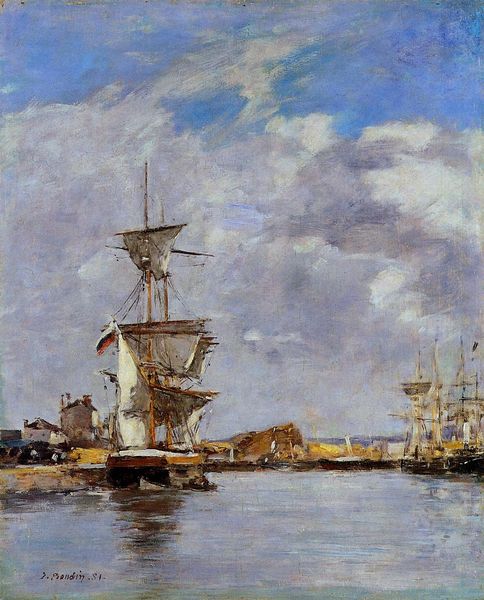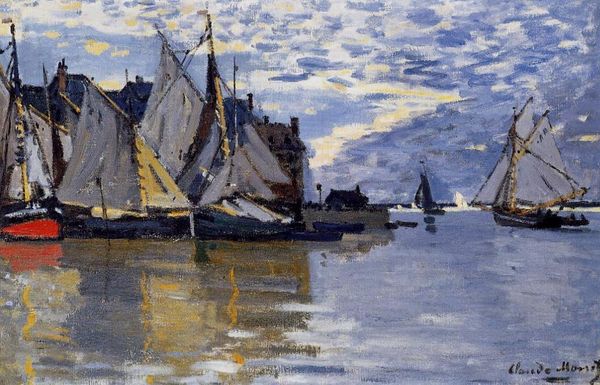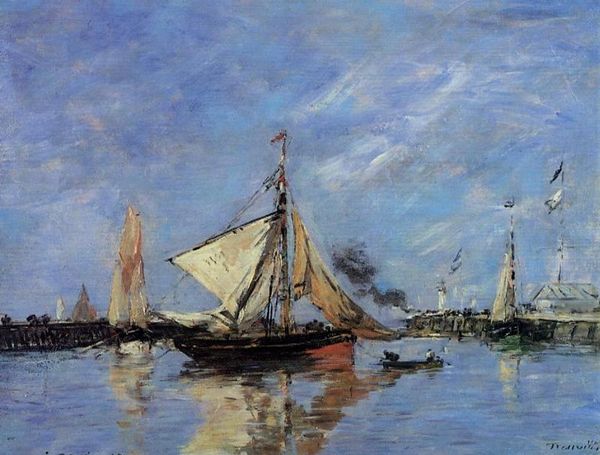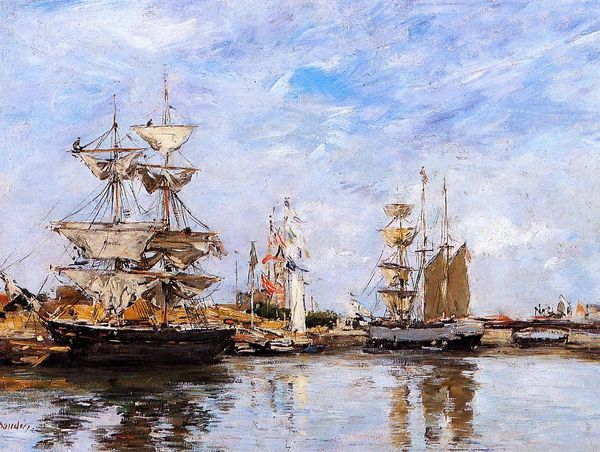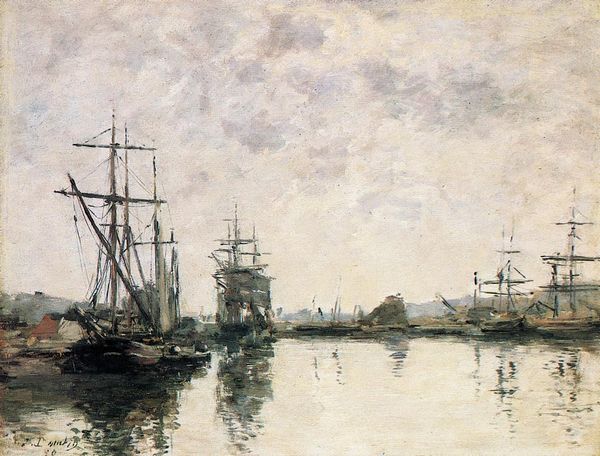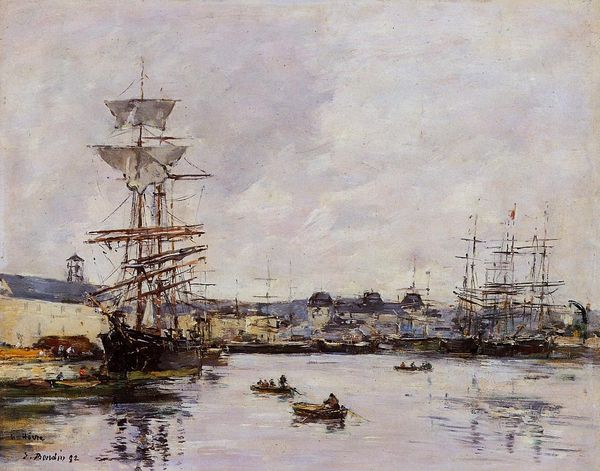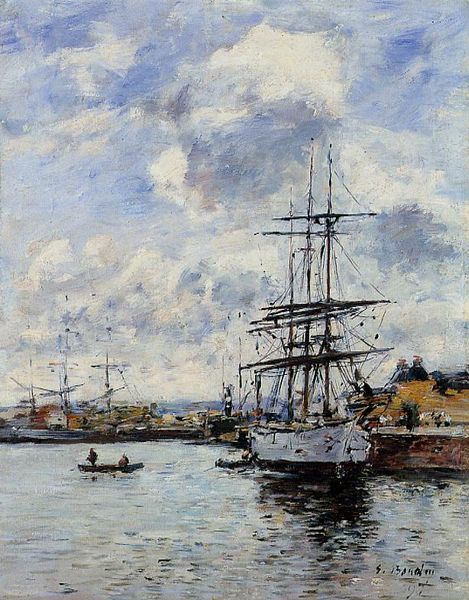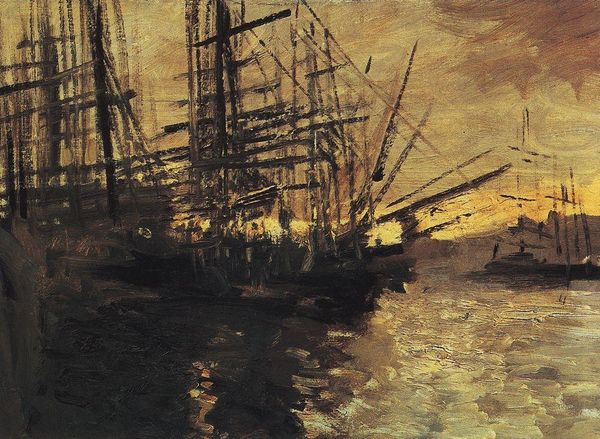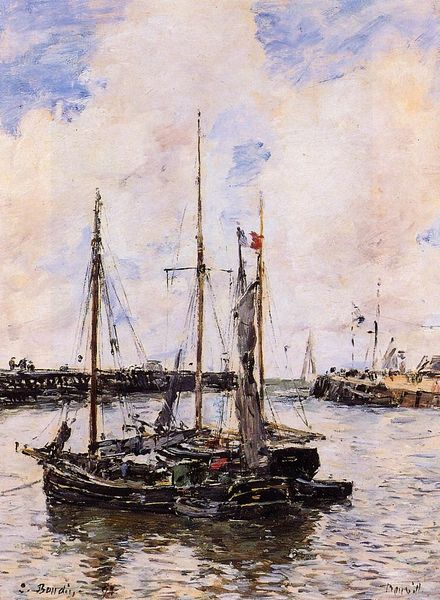
painting, plein-air, oil-paint, impasto
#
ship
#
painting
#
impressionism
#
impressionist painting style
#
plein-air
#
oil-paint
#
landscape
#
impressionist landscape
#
oil painting
#
impasto
#
cityscape
Dimensions: 49.8 x 61 cm
Copyright: Public domain
Curator: Here we have Claude Monet's "Ships in Harbor," an oil painting completed in 1873 and held at the Museum of Fine Arts, Boston. It is a classic example of plein-air painting, marked by his distinctive impasto brushstrokes. Editor: The painting strikes me as somewhat melancholic. The palette is quite muted, a range of greens and grays dominating the scene. Despite the vibrant touches, there’s a quiet stillness. It makes me ponder on issues of maritime trade. Curator: Monet's focus here isn’t necessarily to romanticize trade itself but rather to explore light and atmosphere. Ships become vehicles to play with reflections and shadows, capturing a transient moment in the harbor. The symbolism of the ships is less about their function, and more about their form. Editor: I'm intrigued by your distinction of their forms! Ships in harbors always suggest points of departure and return, potential mobility and sometimes, even exploitation, particularly in a 19th-century context. Perhaps that perceived melancholia I noted originates from these very considerations of global movement. Curator: The image echoes motifs of leaving, returning, and exchange—and ships indeed held a distinct social status, connecting far-flung communities. Consider that this was done *en plein air*, suggesting that this artwork should capture that feeling in a moment! That the impression could bring up historical considerations. Editor: Indeed. This work now strikes me as less an objective portrayal, and rather an engagement with memory. Each stroke adds nuance and subjectivity to the narrative. Looking closer, the seemingly simple rendering, those quickly applied marks, suggests a deep understanding of not just the physical properties of water and light, but also of the cultural symbolism inherent within maritime settings. The water, however still it is, can be read as full of historical charge. Curator: That's a valuable reminder, isn't it? That even an impressionistic harbor scene carries profound traces of historical weight and collective emotions. It’s remarkable to reflect on the ways the impression left on us in turn resonates back through culture and meaning. Editor: Precisely. This encounter prompts contemplation—inviting questions regarding history and cultural memory beyond its apparent impressionistic tranquility.
Comments
No comments
Be the first to comment and join the conversation on the ultimate creative platform.

